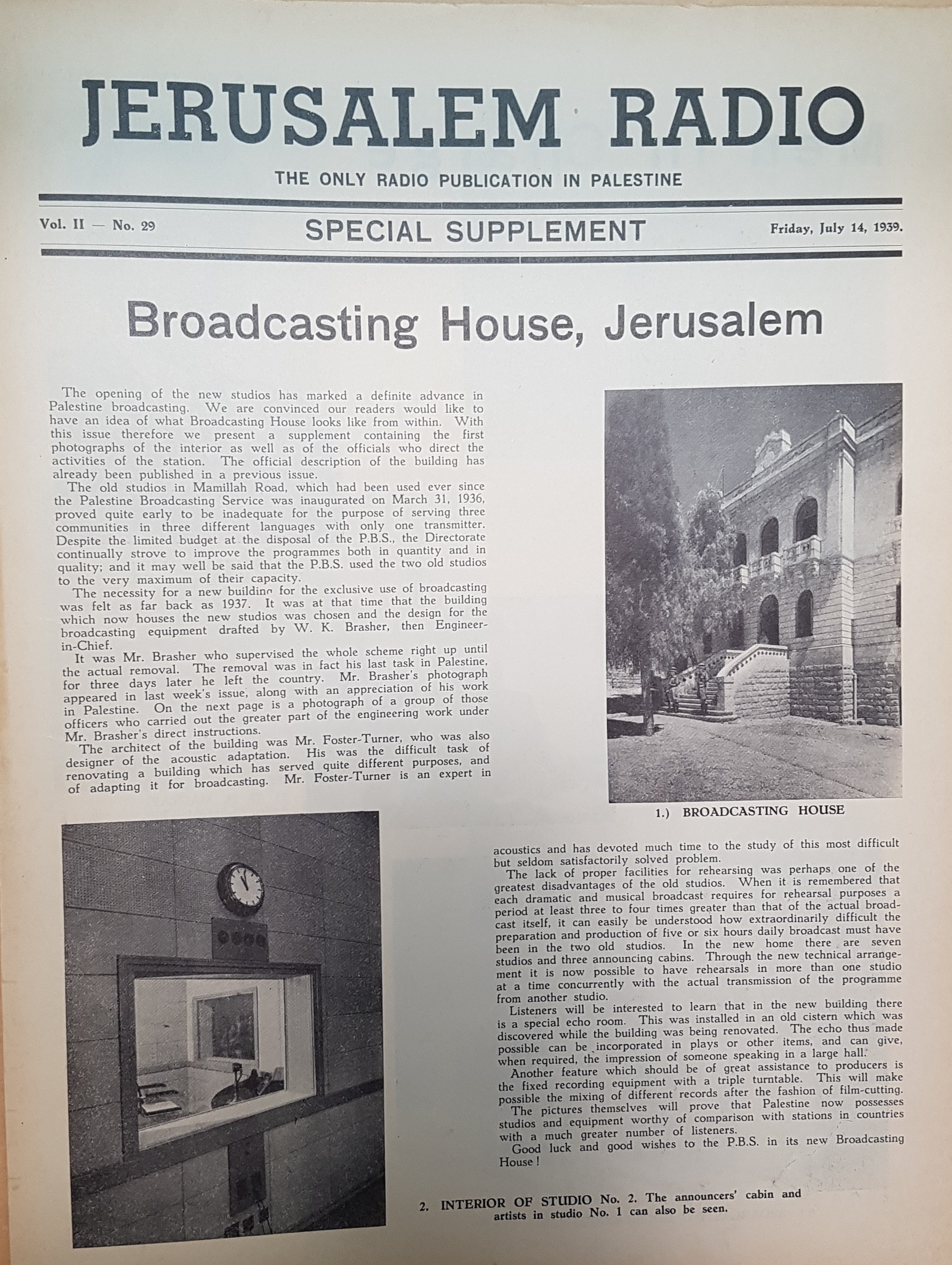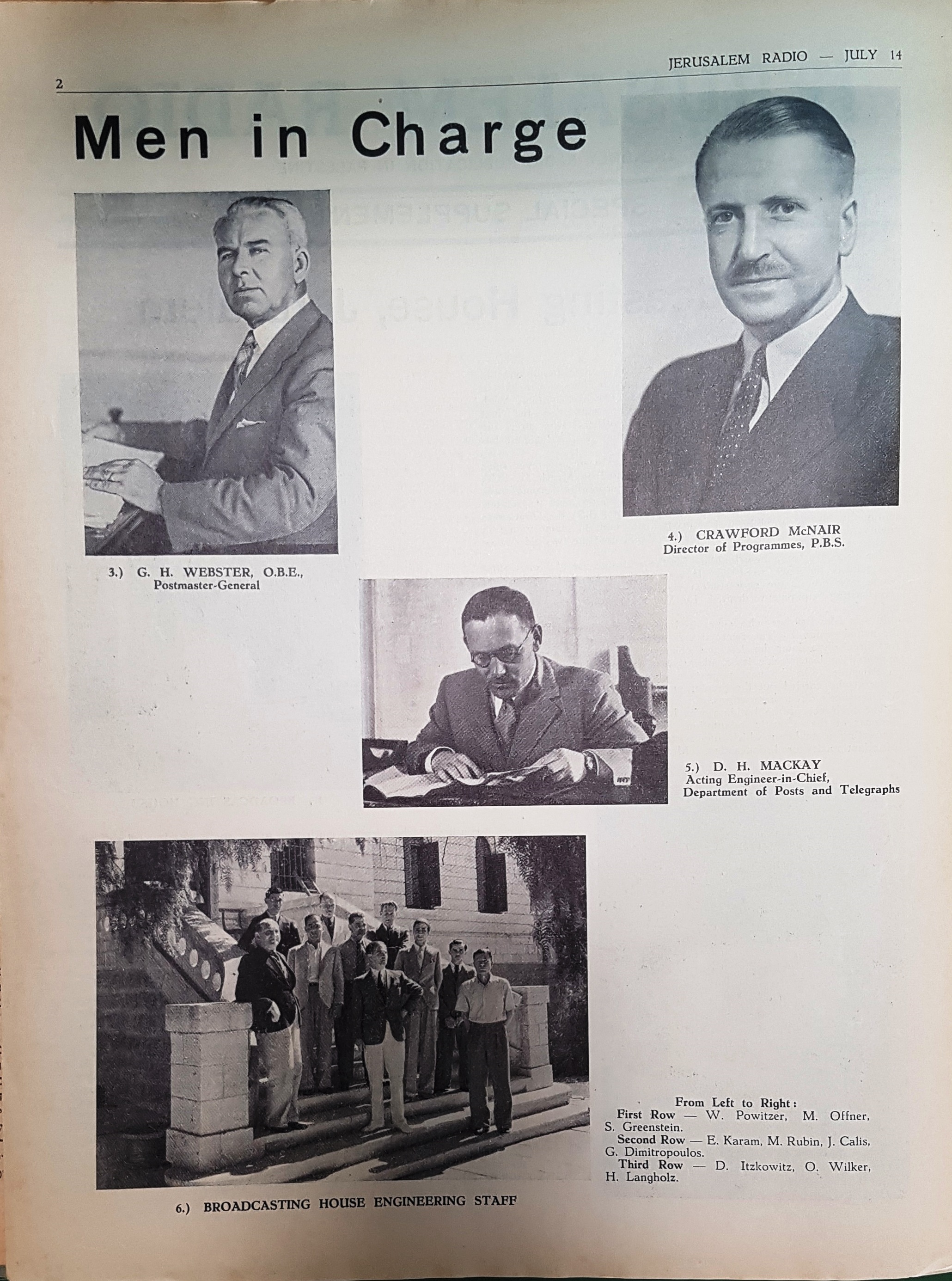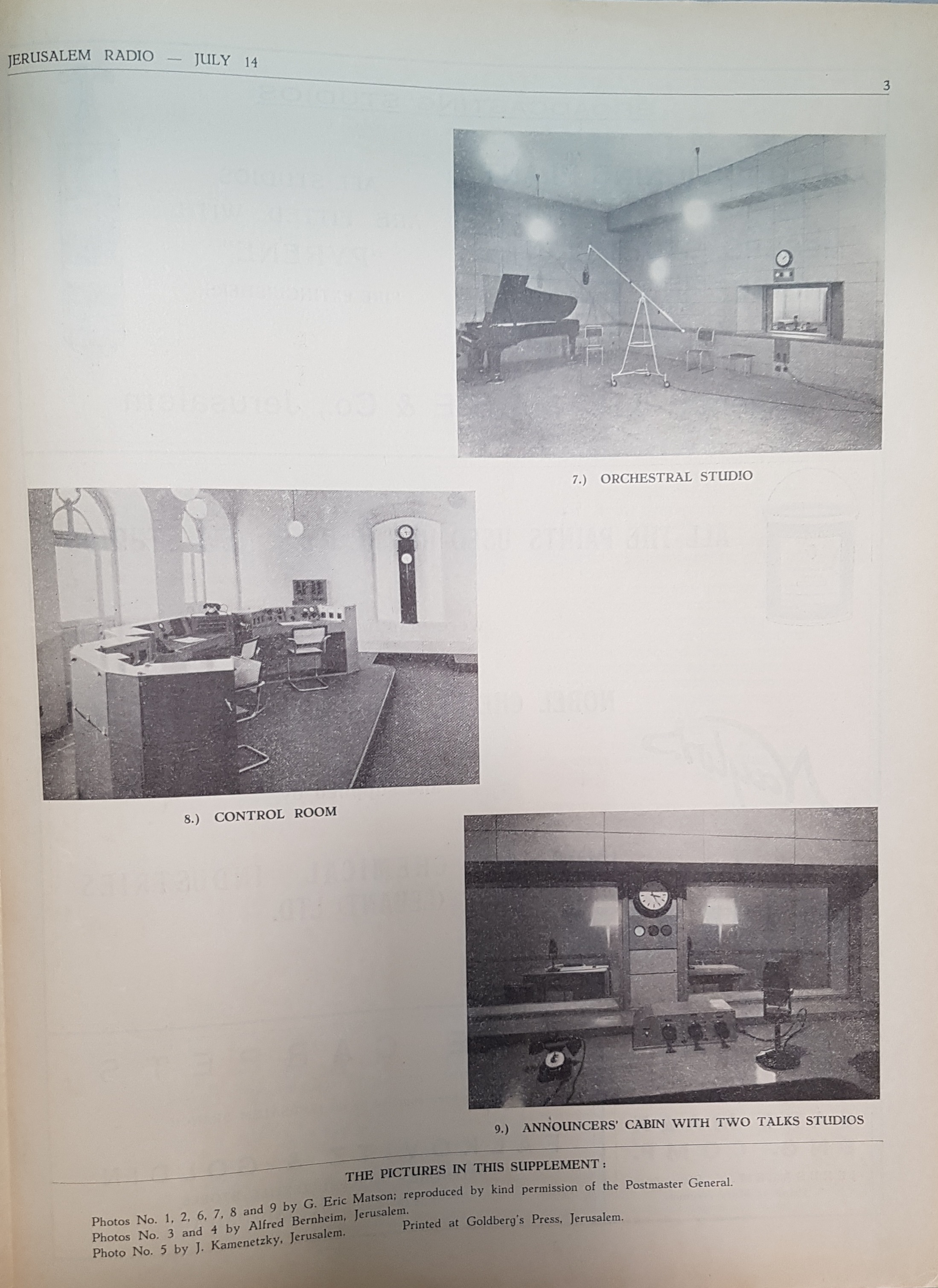
The old studios in Mamillah Road, which had been used ever since the Palestine Broadcasting Service was inaugurated on March 31, 1936, proved quite early to be inadequate for the purpose of serving three communities in three different languages with only one transmitter. Despite the limited budget at the disposal of the PBS, the directorate continually strove to improve the programmes both in quantity and in quality; and it may be well said that the PBS used the two old studios to the very maximum of their capacity.
The necessity for a new building for the exclusive use of broadcasting was felt as far back as 1937. It was at that time that the building which now houses the new studios was chosen and the design for the broadcasting equipment drafted by W. K. Brasher, then Engineer-in-Chief.
It was Mr. Brasher who supervised the whole scheme right up until the actual removal. The removal was in fact his last task in Palestine, for three days later he left the country. Mr. Brasher's photograph appeared in last week's issue, along with an appreciation of his work in Palestine. On the next page is a photograph of a group of those officers who carried out the greater part of the engineering work under Mr. Brasher's direct Instructions.
The architect of the building was Mr. Foster-Turner, who was also designer of the acoustic adaptation. His was the difficult task of renovating a building which has served quite different purposes, and of adapting it for broadcasting. Mr. Foster-Turner is an expert in acoustics. and has devoted much timme to the study of this most difficult but seldom satisfactorily solved problem.
The lack of proper facilities for rehearsing was perhaps one of the greatest disadvantages of the old studios. When it is remebered that each dramatic and musical broadcast requires for rehearsal purposes a period at least three to four times greater than that of the actual broadcast itself, it can easily be undferstood how extraordinary difficult the preparation and production of five or six hours daily broadcast must have been in the two old studios. In the new home there are seven studios and three annhouncing cabins. Through the new technical arrangement it is now possible to have rehearsals in more than one studio at a time concurrently with the actual transmission of the programme from another studio.
Listeners will be interested to learn that in the new building thereis a special echo room. This was installed in an old cistern which was discovered while the building was being renovated. The echo thus made possible can be incorporated in plays and other items, and can give, when required, the impression of someone speaking in a large hall.
Another feature which should be of great assistance to producers is the fixed recording equipment with a triple turntable. This will make possible the mixing of different records after the fashion of film-cutting.
The pictures themselves will prove that Palestine now possesses studios and equipment worthy of of comparison with stations in countries with a much greater number of listeners.
Photo #2: Interior of Studio no.2. The announcer's cabin and artists in studio No. 1 can also be seen.
Photo #3: G. H. Webster, OBE Postmaster-General
Photo #4: Crawford McNair, Director of Programmes, PBS
Photo #5: D. H. MacKay, Acting Engineer-in-Chief, Department of Posts and Telegraphs
Photo #6: Broadfcasting House Engineering Staff.
Photo #7: Orchestral Studio
Photo #8: Control Room
Photo #9: Announcer's Cabin with two Talks Studios.
The pictures in this Supplement:

from left to right
First Row: W. Powitzer, M. Offner, S. Greenstein
Second Row: E. Karam, M. Rubin, J. Calis. G. Dimitropoulos
Third Row: D. Itzkovitz, O. Wilker, H. Langholz.

Photos No. 1, 2, 6, 7 ,8, and 9 by G. Eric Matson: reproduced by kind permission of the Postmaster-General
Photos No. 3 and 4 by Alfred Bernheim, Jerusalem.
Photo No. 5. by J. Kamenetzky, Jerusalem.
Printed at Goldberg's Press, Jerusalem.